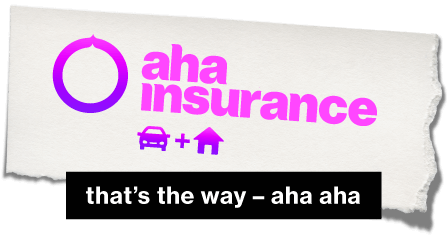Car insurance Hamilton, ON
Part of a series on car insurance rates in Ontario.

Car Insurance Hamilton FAQ
What type of auto insurance do I need in Hamilton?
In Hamilton, Ontario, there are various car insurance coverage options to choose from. Certain types of auto insurance are mandatory, while others are optional.
All drivers in Hamilton, as well as across Ontario, are required to have third-party liability coverage. This compulsory form of coverage offers protection in situations where you are liable for causing harm or damage to others while operating a vehicle. It encompasses legal expenses, settlements, and claims, up to a minimum coverage limit of $200,000. However, many policyholders choose higher coverage limits, such as $1 or $2 million.
This obligatory coverage also includes accident benefits coverage, which benefits individuals injured in a car accident, regardless of fault. It encompasses uninsured motorist coverage, safeguarding you in case of an accident with an uninsured, underinsured, or hit-and-run driver. Additionally, it encompasses direct compensation-property damage coverage, which becomes applicable when your vehicle is damaged in an accident caused by another party.
What are the main things affecting my auto insurance premiums in Hamilton?
Several factors can influence your auto insurance premiums in Hamilton. The main things that can affect your rates include the following:
- Driving Record: Your driving history plays a significant role in determining your premiums. Insurance companies consider factors such as past accidents, traffic violations, and claims history. A clean driving record with no accidents or tickets can result in lower premiums.
- Age and Experience: Younger and less experienced drivers typically have higher insurance premiums due to their higher risk profile. As you gain more driving experience and age, your premiums may decrease.
- Location: Where you live in Hamilton can impact your insurance rates. Areas with higher population density or higher incidents of theft or accidents may have higher premiums.
- Vehicle Type: Your vehicle’s make, model, and year can influence your insurance rates. Expensive or high-performance cars generally have higher premiums due to higher repair costs or increased theft risk.
- Coverage and Deductibles: The type and amount of coverage you choose and the deductibles you select can affect your premiums. Higher coverage limits and lower deductibles typically lead to higher premiums.
- Claims History: Your claims history, including at-fault accidents and claims frequency, can impact your premiums. Insurance companies may view a history of claims as an increased risk and charge higher premiums.
- Insurance History: A continuous insurance history with no coverage gaps can result in lower premiums. Insurance companies may offer discounts to individuals who have maintained continuous coverage.
- Usage and Mileage: How you use your vehicle and your annual mileage can influence your premiums. Higher mileage or using your vehicle for business purposes may lead to higher rates.
Insurance companies have underwriting criteria, so each may weigh these factors differently. Consulting with insurance providers or brokers can help you understand how these factors specifically impact your insurance premiums in Hamilton and identify potential ways to reduce your rates.
What type of car insurance does aha insurance offer in Hamilton?
Here at aha insurance, we offer several types of car insurance.
Mandatory Coverage
Car insurance obligations in Ontario include the following mandatory requirements:
Third-Party Liability Coverage
Third-party liability coverage is an obligatory aspect of car insurance in Ontario, protecting in cases where you are responsible for causing injuries to individuals or damage to their property while driving your vehicle. This coverage assists in managing the expenses associated with legal matters, settlements, and claims made against you by third parties up to the predetermined coverage limit.
Uninsured Motorist Coverage
Uninsured motorist coverage is an insurance option designed to provide protection when you encounter an accident with a driver who lacks insurance, has inadequate coverage, or flees the scene. This coverage safeguards against bodily injury and property damage resulting from such encounters with uninsured or underinsured drivers.
Direct Compensation-Property Damage (DC-PD) Coverage
Direct compensation-property damage (DC-PD) coverage comes into effect when your vehicle sustains damage in an accident caused by another party. With this coverage, you can receive compensation directly from your own insurance provider. It is solely focused on addressing the costs associated with repairing or replacing your vehicle and any loss of use resulting from the accident.
Accident Benefits Coverage
Accident benefits coverage, also referred to as statutory accident benefits, is a compulsory component of car insurance in Ontario. It supports individuals who have sustained injuries in a car accident, irrespective of fault. These benefits include medical expenses, rehabilitation costs, attendant care, caregiver benefits, non-earner benefits, and income replacement benefits.
Optional Coverage
Additionally, there are various optional coverage options for auto insurance, including:
Collision Coverage
Collision is a type of auto insurance option that provides financial protection for damages to your vehicle resulting from at-fault collisions with other vehicles or objects. This coverage assists in covering the costs associated with repairing or replacing your vehicle, up to its current market value, after subtracting the deductible amount you have selected.
Comprehensive Coverage
Comprehensive is an auto insurance option that offers extensive protection for damages to your vehicle that are not a result of collisions. This coverage encompasses a variety of non-collision incidents, such as theft, vandalism, fire, hail, falling objects, and damage caused by animals. Like collision coverage, comprehensive coverage aids in covering the costs of repairing or replacing your vehicle up to its current market value while taking into account the deductible you have chosen.
Specified Perils Coverage
Specified perils coverage is an optional form of car insurance that provides targeted protection against a predetermined list of risks detailed in your policy. These risks typically include specific perils such as fire, theft, hail, lightning, and other perils specifically specified in the policy. By selecting specified perils coverage, you are insured for damages resulting from the perils explicitly mentioned in the policy; however, coverage for damages caused by other perils may not be included.
All Perils Coverage
All perils coverage is an inclusive and more extensive type of car insurance encompassing both collision and comprehensive coverage. With all perils coverage, unless expressly stated otherwise in the policy, you are safeguarded against a broad spectrum of risks, including collisions, theft, fire, vandalism, and various other perils.
What is dangerous driving, and how does it impact my car insurance rate?
Dangerous driving, also known as reckless driving, refers to operating a vehicle in a manner that poses a significant risk to the safety of others on the road. It typically involves engaging in behaviours disregarding traffic laws, such as excessive speeding, aggressive driving, tailgating, running red lights, or driving under the influence of drugs or alcohol.
The impact of dangerous driving on your car insurance rate can be significant. Insurance companies consider driving behaviour and traffic violations when determining premiums. If you have a history of dangerous driving or multiple traffic offences, insurance companies may view you as a high-risk driver and assign higher insurance premiums as a result.
Insurance companies use statistical data to assess risk, and drivers with a record of dangerous driving behaviours are statistically more likely to be involved in accidents. As a result, insurance companies increase premiums to mitigate the higher risk associated with insuring such individuals.
Also, dangerous driving convictions can lead to license suspensions, fines, and criminal charges. These legal consequences can further impact your ability to obtain affordable car insurance coverage.
Therefore, it is essential to prioritize safe driving practices for your well-being, maintain a clean driving record, and keep your insurance rates as low as possible. By obeying traffic laws, practicing defensive driving, and avoiding dangerous behaviours on the road, you can demonstrate responsible driving habits and potentially lower your car insurance premiums over time.
ow can I find the best car insurance quote in Hamilton?
Finding the best car insurance quote in Hamilton involves a few essential steps:
- Research and gather information: Begin by conducting thorough research on various insurance providers operating in Hamilton. Look for companies with a solid reputation and wide coverage options. Take the time to read customer reviews and ratings of the insurance companies you are considering. This can provide insights into their customer service, claims handling, and overall satisfaction levels.
- Compare quotes from multiple providers: Reach out to different insurance brokers and request customized quotes that align with your specific coverage needs. Provide accurate information about your driving history, vehicle details, and any other relevant factors. Carefully compare the quotes you receive, paying attention to coverage limits, deductibles, and premiums. This will help you identify the most competitive options.
- Seek expert advice and consider bundles or discounts: Consult with an insurance broker who can offer expert guidance and help you navigate through the available options. They have access to multiple insurance providers and can assist you in finding the best car insurance quote in Hamilton. Additionally, inquire about any available discounts or incentives offered by insurance companies, such as safe driver discounts or bundled insurance packages. These can help further reduce your premiums and enhance the overall value of your car insurance coverage.
By conducting thorough research, comparing quotes, and seeking professional advice, you can increase your chances of finding the best car insurance quote that suits your needs and provides optimal coverage at a competitive price.
What is the most affordable area for car insurance in Hamilton?
According to available data, the average annual price of auto insurance in Hamilton amounts to approximately $1,542, with the L8J, L8E, and L8G postal code areas having the cheapest rates and the most expensive being L8H.
Nevertheless, car insurance rates can fluctuate depending on various factors, such as where you live, your driving record, age, and the type of vehicle you own, among other considerations. To secure the most budget-friendly car insurance rates in Hamilton, it is advisable to reach out to insurance providers directly and request personalized quotes that align with your unique circumstances. By comparing rates from multiple insurers, you can identify the most financially advantageous option for your specific car insurance requirements in Hamilton.
How does mileage impact my auto insurance rate?
Mileage can have an impact on your auto insurance rate. Insurance companies consider mileage as a factor because it correlates with the level of risk associated with your vehicle. Here’s how mileage can influence your insurance rate:
- Annual Mileage: Insurance companies typically ask for the estimated number of miles you expect to drive in a year. The more you drive, the higher the risk of being involved in an accident, which can result in higher insurance premiums.
- Commute Distance: If you use your vehicle for daily commuting, the distance you travel to work or school can affect your insurance rate. Longer commutes may result in higher premiums due to increased exposure to potential accidents or incidents on the road.
- Usage Type: Insurance companies also consider the purpose of your driving. Suppose you primarily use your vehicle for business purposes or ride-sharing services. In that case, you may face higher premiums due to the increased time spent on the road and exposure to various driving conditions.
It’s important to provide accurate information about your mileage to your insurance provider, as inaccuracies can potentially result in coverage issues or claim disputes. You may be eligible for a rate adjustment or discount if your mileage decreases significantly during your policy term. Therefore, you should update your insurance company if there are any significant changes in your driving habits or mileage.
Who regulates car insurance rates in Hamilton?
The Financial Services Regulatory Authority of Ontario (FSRA) is the regulatory body responsible for overseeing and controlling car insurance rates in Hamilton and throughout the entire province of Ontario. As a government agency, the FSRA’s primary role is to ensure that insurance companies follow established rules and regulations when setting their insurance rates. They review and approve the rates proposed by insurance companies to ensure fairness, reasonability, and compliance with applicable laws.
By regulating insurance rates, the FSRA aims to safeguard the interests of consumers and maintain a transparent and competitive insurance market in Hamilton. Their oversight helps ensure that insurance companies adhere to guidelines and pricing structures, providing consumers with access to reasonable and appropriate insurance coverage at fair rates.
Can I get month-to-month car insurance in Hamilton?
Regrettably, month-to-month car insurance is not offered in Hamilton. In fact, you can’t get it anywhere in Ontario. This region’s insurance companies require policyholders to pay their premiums annually through monthly installments or upfront payments.
Fast facts about auto insurance in Hamilton
Average annual car insurance rate
Regular drivers in the city
Collisions per year (approximately)
%
Collision rate for the city
Average age
Average household income
%
Unemployment rate
Population
Understanding car insurance in Hamilton, Ontario
Hamilton sits at a major juncture between the Greater Toronto Area, St. Catharines, and everything west of it.
In addition to its own sizable population of a half-million people and a strong economy, Hamilton’s outer neighbourhoods have started to become commuter hubs for the surrounding regions, including:
- Burlington
- Oakville
- Grimsby
- St. Catharines
- Guelph
- Cambridge
- Brantford
That means highways and ring roads surround the city, especially on it’s northeastern border with Burlington. If you’re commuting to work, then you’ll need to plan for traffic build-ups on the QEW, the 403, Lakeshore Road, and maybe even Highway 8.
A lot of people commute to and from the city, and the 403’s spaghetti-junction merge ramps almost certainly contribute to the city’s high collision rate of 3.9%. Stay vigilant when you’re merging or in the right-hand lane and you’ll cut down your chance of a collision by half. That’s good for your car insurance rates, obviously.
Watch out for steep roads going up and down the mountain (technically an “escarpment”), a lot of one-way streets, and you’ll be well on your way to driving like a pro in Hamilton.
Get your bundle on & save!
Want even cheaper insurance? Save up to 50% on home and up to 15% on car insurance when you bundle them.

Get your bundle on & save!
Want even cheaper insurance? Save up to 50% on home and up to 15% on car insurance when you bundle them.

Busting myths about driving and insurance in Hamilton
Myth: Hamilton isn’t a safe place to live.
Not true. Hamilton’s crime severity index is only 53.6 according to 2016 census data. Cities with higher crime indexes include Halifax (61), Montreal (57.8), Kingston (55.2), Kitchener-Waterloo and Cambridge (61.2), London (68.4), and Windsor (65.1). Hamilton sees more criminal activity in communities along King Street compared to Dundas or Stoney Creek, but it’s actually a reasonably safe city.
Myth: Hamilton is just industrial.
Wrong! While the bay is dominated by Stelco on the skyline, Hamilton itself is actually home to a disproportionate number of green spaces. Cootes Paradise, the Royal Botanical Gardens, and Bayfront Park all sit within a 10-15 minute drive of each other on the Bay (around the 403). You’re also just an hour away from Niagara’s vineyards, which are beautiful.
Myth: Finding parking is a nightmare.
While it can be hard to find good street parking, that’s because it’s generally free after 6:00 p.m. on weekdays and all day on weekends. With that said, there are a fair number of through streets with parking restrictions even in neighbourhoods. Newcomers to the city can become frustrated with finding street parking nearby, but locals know to find quick parking on residential streets a block or two away.
Myth: You either work industrially or commute.
Not true these days. While Hamilton’s steel, iron, and related industries represent a big chunk of its workforce, the city’s service industry has grown in recent years. Commuting isn’t the only option, but if a stone cracks your windshield then you can get it repaired at Auto Glass Hamilton.
How Hamilton’s rates compare to other cities in Ontario
- North York: $4,261
- Etobicoke: $4,199
- Brampton: $4,071
- Scarborough: $3,825
- East York: $3,605
- Woodbridge: $3,603
- Richmond Hill: $3,579
- Mississauga: $3,473
- Markham: $3,389
- Niagara Falls: $3,321
- Bowmanville: $3,308
- Peterborough: $3,259
- Pickering: $ 3,245
- Newmarket: $ 3,216
- Hamilton: $3,201
- Brantford: $ 3,158
- Maple: $3,150
- Whitby: $3,087
- Ajax: $3,053
- York: $2,999
- Toronto: $2,983
- Barrie: $2,924
- Thornhill: $2,871
- Waterloo: $2,867
- Caledon: $2,780
- London: $2,765
- Fort Erie: $2,720
- Oakville: $2,720
- Sault Ste Marie: $ 2,713
- Kitchener: $2,705
- Milton: $2,680
- St Catharines: $ 2,550
- Windsor: $2,536
- Woodstock: $2,513
- Innisfil: $2,505
- Burlington: $2,476
- Kingston: $ 2,360
- Cambridge: $2,297
- Oshawa: $2,295
- Guelph: $2,268
- Gloucester: $2,256
- Stoney Creek: $2,222
- Nepean: $2,196
- Ottawa: $2,195
- Sudbury: $2,005
- Kanata: $2,002
- Thunder Bay: $1,973
- Wasaga Beach: $1,958
Quick tips on driving in Hamilton
Avoid driving on the Burlington Skyway during storms or windy days.
The Skyway as iconic as it is practical, essentially acting as a highway over water with a nice view of Stelco in the morning. But it can also be a dangerous route when winds pick up. There isn’t much of a buffer zone between the wind and your car.
You won’t be swept off the bridge, but larger vehicles have been known to get blown over once in a while. You can take the side road underneath the Skyway as an alternative, but the other regular commuters will have the same idea!
Winter driving on the mountain is a whole new ballgame.
Icy roads are bad enough for the rest of Ontario, but Hamilton’s steep roadways going up and down the escarpment can throw a wildcard into the mix for the uninitiated.
Even people who just commute or visit family need to drive extra carefully in winter, especially on the downward slope on Highway 6 just past Clappison’s Corners.
Start thinking one-way.
Hamilton’s incorporation goes back to 1846, so it’s a fairly old city by Canadian standards. That comes with one-way streets, and Hamilton has enough of them to make visitors’ heads spin.
You’ll often find them on residential side streets, but it’s not uncommon to find one-way through streets (especially in the old city core). Keep an eye out for them around the Duran, Beasley, and Central Hamilton neighbourhoods.
Sources for fast facts about Hamilton:
- Statistics Canada, 2016 Hamilton Census Profile
- Ministry of Transportation, 2016 Road Safety Report
- Statistics Canada, Police-reported Crime Severity Indexes, by census metropolitan area, 2016
Source for average insurance rates by city:
- Survey of 2,800 auto insurance policy holders in Ontario

Google Rating: 4.8
Hot Dang! Those are some beautiful words from beautiful people.






























